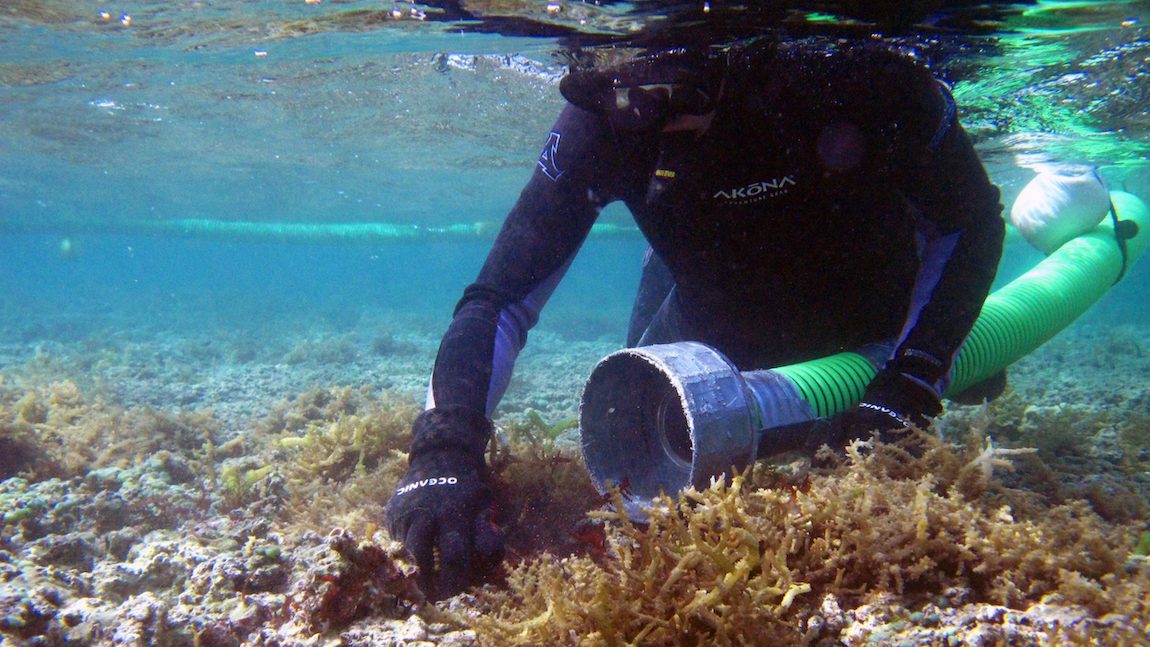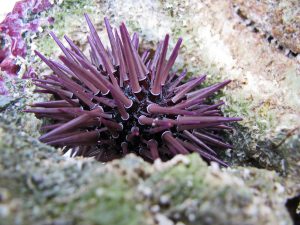
Hawaiian Innovation
Hawaii is known for great beaches, beautiful water and lots of marine life, but the coral reefs around Hawaii are suffering from a killer all their own: tropical invasive algae, one of the most invasive species in the oceans today.
In 2018, scientists in Hawaii developed an innovative method of removing invasive algae that can smother coral reefs. They’ve been testing this method in Oahu’s Kaneohe Bay, to great success.
This new technique has two steps. First, the scientists remove the algae with an underwater “Super Sucker” vacuum. Second, they introduce juvenile collector sea urchins to feed on the remaining algae. Although native to the bay, the sea urchin population was too low to battle the invasive algae. Officials developed a sea urchin hatchery, eventually releasing thousands of them into the bay.
The scientists removed more than 40,000 pounds of invasive algae, introduced 100,000 native sea urchins, and freed almost six acres of reef off the coast of Oahu over a two-year period. This represents an 85 percent reduction in algae.
This is the most ambitious attempt to remove algae (which competes with native species and limits biodiversity because it smothers the coral) so far. Most previous attempts to remove large amounts of algae haven’t been as successful. This new method is not only effective, but also has minimal environmental impact, and uses a native sea creature to reduce algae levels.
There’s one more benefit to this method—the algae collected by the Super Sucker gets used as fertilizer for local farmers. The algae is rich in nutrients and good for local crops such as taro and sweet potatoes. Even better? It’s high in potassium, which is considered a good insect repellent.
Curriculum Reference Links
- Biological World / Sustainability / 10: Students should be able to evaluate how humans can successfully conserve ecological biodiversity and contribute to global food production; appreciate the benefits that people obtain from ecosystems


